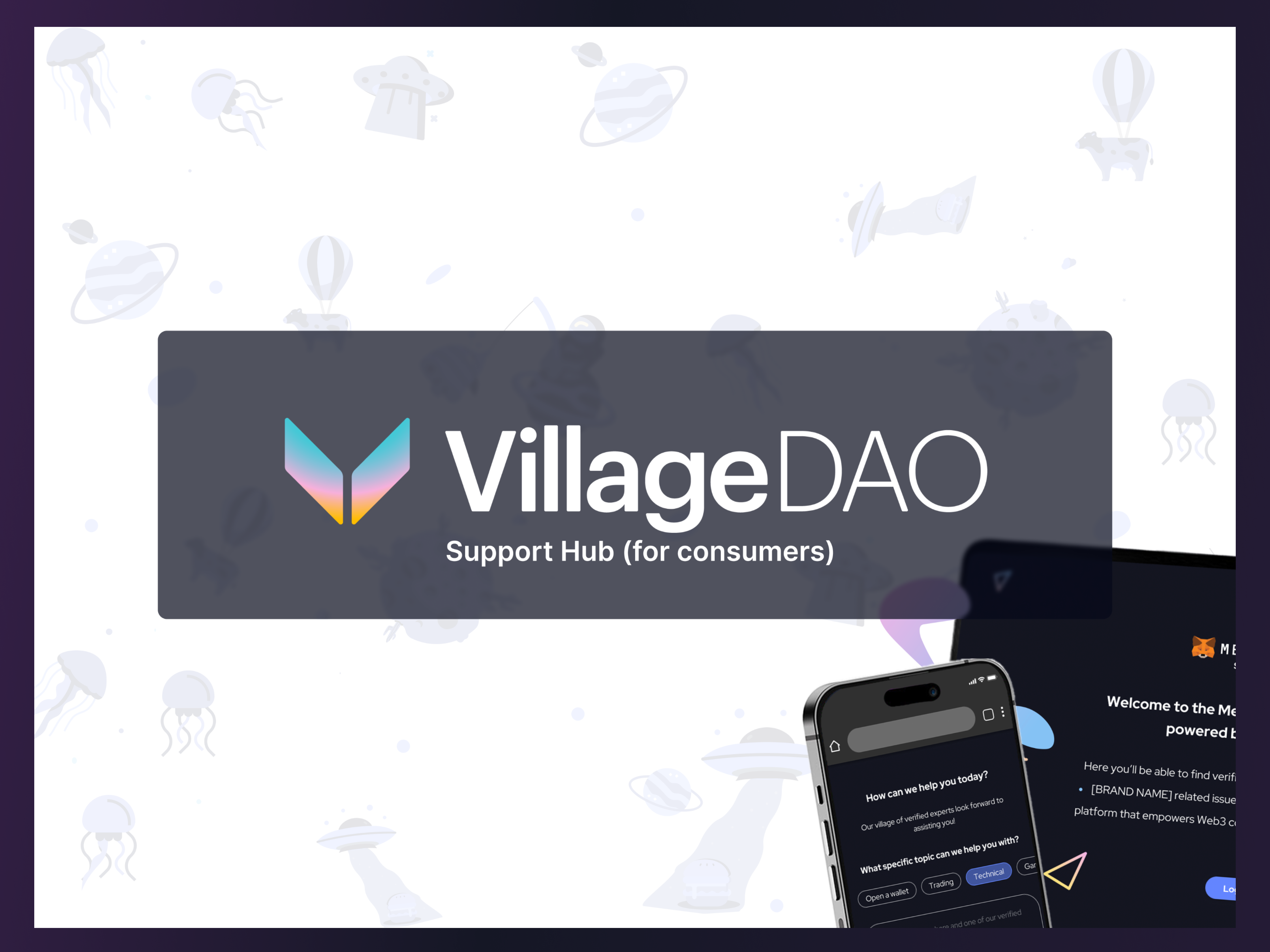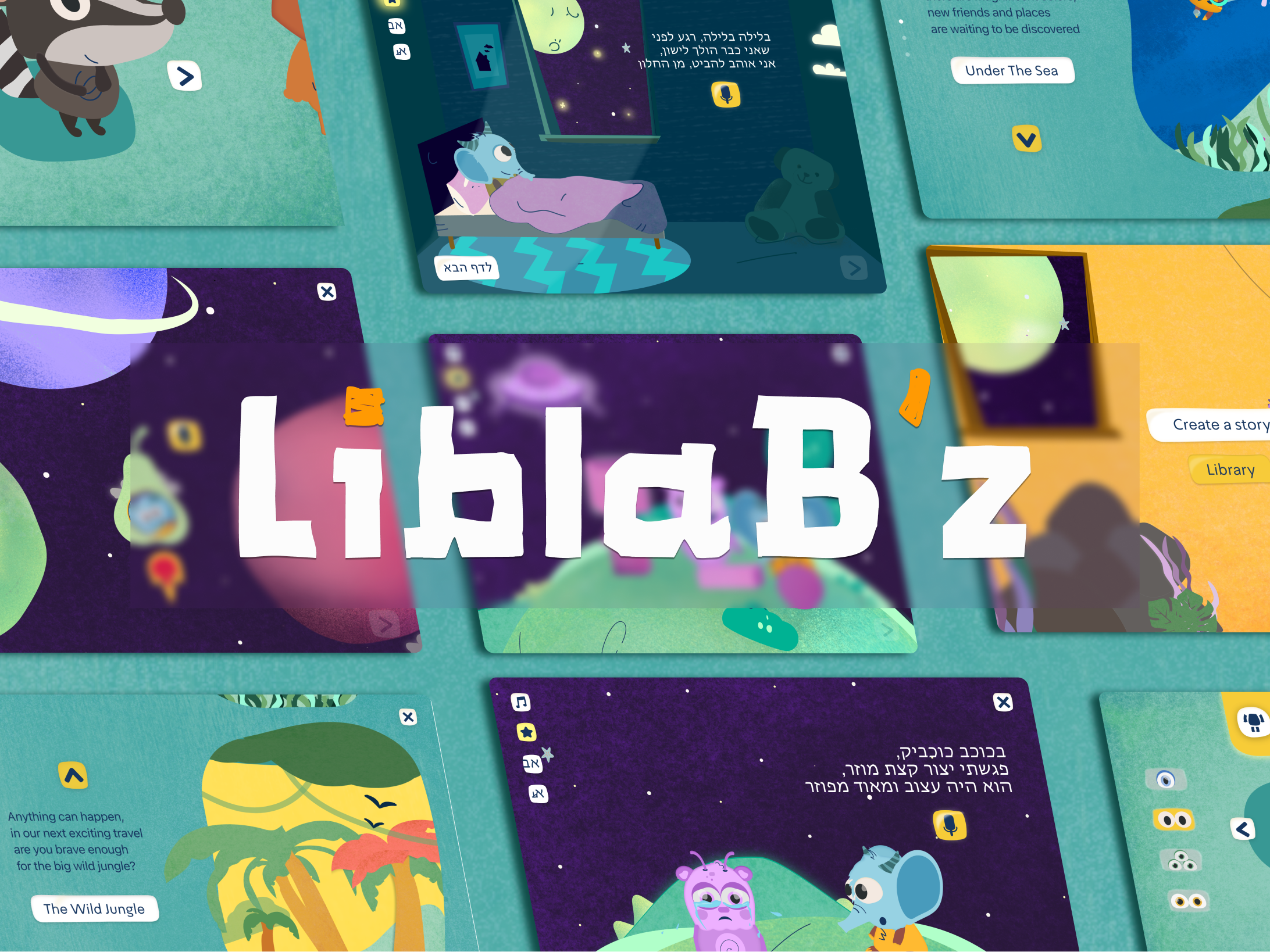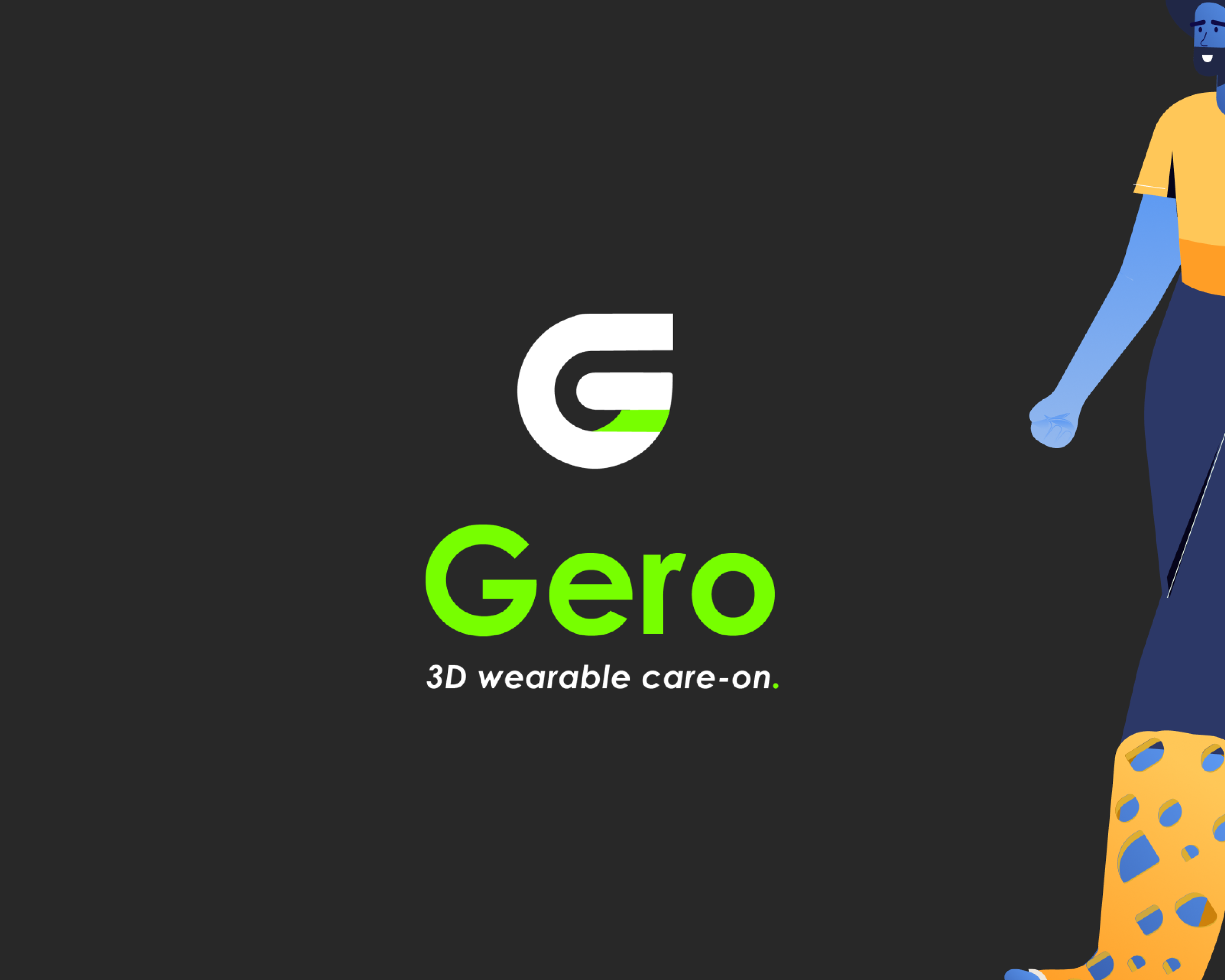VillageDAO (Experts Hub)
Decentralized Customer Care Ecosystem
By ConsenSys (MetaMask), LivePerson
By ConsenSys (MetaMask), LivePerson
Introduction - Expert Support in the Web3
VillageDAO is an innovative decentralized platform, co-created by LivePerson and MetaMask, that aims to redefine customer care in the Web3 space. It serves as a virtual village where users seeking advice ("Villagers") can connect with experienced experts to resolve issues, share knowledge, and build a resilient Web3 community.
The Experts Hub -
VillageDAO offers two platforms: "VillageDAO Experts Hub" for experts linked to brands like Metamask, providing support on brand products and web3 queries, and tracking their earnings and efficiency.
See also "VillageDAO Support Hub" in my portfolio for more detail
My Role
Product Designer Lead
later collaborated with UX researcher from Consensys.
2021 - 2022
later collaborated with UX researcher from Consensys.
2021 - 2022
Mobile app + Desktop
Main Challenges
1. The nature of our users
The interface had to cater to a unique user type, keen on privacy and identity protection, yet still required to create a safe environment without personal details so both experts and community members wouldn't feel exposed.
The interface had to cater to a unique user type, keen on privacy and identity protection, yet still required to create a safe environment without personal details so both experts and community members wouldn't feel exposed.
2. Motivation
Motivating our experts to provide support was a task, as they are connected to brands but not regular employees and earn rewards based on their contributions to VillageDAO. The uncertainty of initial earnings, coupled with the need to encourage maximal support from these experts in the context of a new and unstable cryptocurrency, posed difficulties in incentivizing their participation without the promise of immediate financial gain.
Motivating our experts to provide support was a task, as they are connected to brands but not regular employees and earn rewards based on their contributions to VillageDAO. The uncertainty of initial earnings, coupled with the need to encourage maximal support from these experts in the context of a new and unstable cryptocurrency, posed difficulties in incentivizing their participation without the promise of immediate financial gain.
General goal
ur aim was to develop a platform that revolutionizes customer care in the Web3 arena, elevating brands as our design partners. The ultimate goal centered around crafting an engaging and user-friendly UX/UI. This design was intended to inspire Web3 experts to invest their time on the platform, share their knowledge, and feel a sense of reward for their involvement.
Sprint Methodology
In this project, we worked in "sprints" with defined times and features for each period. We made improvements and expanded the features from their basic form to a more complex and ideal version for the user experience.
Research
Market research
To grasp the specific needs and expectations of Web3 experts, I analyzed competitor platforms and community forums. This enabled me to identify best practices and avoid common pitfalls in designing for this specialized audience.
User research
I led user research focused on Web3 experts to understand their needs, challenges, and goals. This helped design UX/UI elements specifically for them. While doing this, I also considered how these decisions impact the indirect users - the villagers seeking support, who rely on the experts' responses. Every UX choice affects both groups.
Clients
(Design partners)
(Design partners)
Our potential clients, akin to Metamask, would benefit from our expert-backed platform offering product support and guidance for community members. These experts must have a broad understanding of web3 and specialize in the relevant brand. Engaging with these clients has highlighted the importance of strong brand representation in fostering customer trust.
Wireframes
Wireframes for both the mobile app and desktop website were created and designed after completing in-depth research and establishing the main user flow and needs (presenting only the main screens here). These wireframes were carefully crafted to ensure that all functional requirements were met and potential edge cases were properly addressed while making adjustments to maintain a consistent feel across both platforms.
UX\UI Design process
App structure
Given the specialized nature of the 'Expert' users, I designed an app structure that was straightforward but highly secure, enabling easy navigation without compromising on the privacy requirements these users demand.
Below is a detailed case study on chosen screens, outlining the challenges encountered following user testing, insights gained, and achievements relative to our initial goals
Examples for final screens and case study
Login
The login screen is designed for web3 and crypto wallet experts to register using their digital wallets, later, also to be used as a future payment of the rewards in VillageDAO’s currency.
Dashboard
In this stage, the dashboard is a work in progress. We were still figuring out which data best motivates experts. Key features include graphs showing each expert's resolved and re-queued support tickets, ratings from assisted users (affecting earnings), and a comparative performance graph against peers. This setup aims to spur experts to offer efficient, rapid support to more community members. Season-end rewards are based on these metrics.
Challenges
Addressing the challenge of motivating our experts before securing their income was a significant task. The dashboard needed to provide not only information but also elements of gamification. Precise graphs were essential to accurately display their current and potential earnings, serving as a motivation tool.
Furthermore, we had to devise a system that would encourage experts to approve and support more tickets, as well as efficiently re-queue them. This was crucial in fostering and strengthening trust among our three user groups: brands, experts, and community members.
Achieving Our Goal
Motivated by the need to engage our experts, I worked on a dashboard that combines game-like elements and competitive aspects to enhance interaction and achievement tracking.
We established a reward system where user ratings are converted into VillageDAO currency. Looking ahead, we plan to introduce tier-specific badges, providing access to more complex support tickets for increased rewards. This system emphasizes user achievements to maintain high motivation levels. The rewards and profits are relative to other experts' achievements, fostering a competitive environment.
Support chat
The chat function stands as the pivotal element of our system, facilitating expert support to community members. Ensuring balanced interactions among brands, experts, and community members is crucial. Our objective has been to design and implement solutions that prevent any party's actions from adversely affecting others, thereby maintaining a controlled and harmonious environment.
Challenges
1. Multibrand Coordination - Anticipating the integration of multiple brands, it's essential for experts affiliated with more than one brand to effectively oversee and handle tickets across all associated brands.
2. System Integrity Risk - We were aware of the potential risk of experts exploiting the system for personal gain, we needed to find a way to remind them that they are assisting real people behind the chat, even though there are no photos and real names. This situation could affect the quality of service, extend the response times, and damage to the brand's reputation.
Achieving Our Goal
We've implemented a permanent draw button for immediate card access and integrated direct chat for efficient communication. A quality control system has been instituted, allowing only the other side to mark tickets as solved, with expert rewards linked to user ratings. Experts receive real-time feedback through push notifications and credit updates. Initially, all support cards grant the same credit regardless of complexity, but we plan to adjust credits based on card complexity and expert ratings in the future. If cards are unresolved or delayed, they are re-queued to another expert for resolution.
Claim rewards screen
At the end of each season, experts have the option to claim their earnings or defer them for future collection. These rewards are based on various factors: resolved ticket count, ticket feedback and ratings, the expert's level and badges, their performance compared to other experts, and their association with specific brands like MetaMask, which can affect the reward amount. At this stage, payments are made in ETH later on in VillageDAO currency.
Chosen screens collection
Design system
With a focus on crafting an experience specifically tailored for Web3 experts, my design approach was holistic. I zeroed in on UI components, integrating elements of gamification and real-time analytics to ensure an engaging and rewarding user experience. Custom illustrations and micro-interactions were seamlessly incorporated to bring the platform to life, enriching the experts' interaction with the system at every touchpoint.


